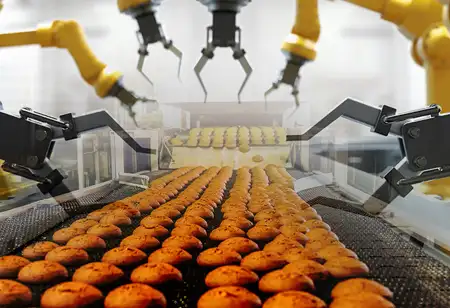Thank you for Subscribing to Food Business Review Weekly Brief
Challenges You Should Know About in Food Distribution Companies
Maintaining a competitive edge in the ever-evolving business world demands constant adaptation.

By
Food Business Review | Tuesday, April 02, 2024
Stay ahead of the industry with exclusive feature stories on the top companies, expert insights and the latest news delivered straight to your inbox. Subscribe today.

Maintaining a competitive edge in the ever-evolving business world demands constant adaptation. Hiring a third-party logistics provider might be helpful if you are a start-up or a well-established company with limited resources to manage your operations.
Fremont, CA: Food spoils in transit, costing billions of dollars annually and devastatingly damaging businesses.
Given the dynamic nature of the shipping sector, it is vital to collaborate with a reliable third-party logistics (3PL) provider who possesses sufficient supply chain expertise. This gives you an advantage over your rivals by enabling you to utilize the business's resources and evade the difficulties that most food transportation organizations encounter.
Here are the top challenges prevalent in the food distribution companies:
Temperature and Humidity
Because it can build or destroy your brand, the food fulfillment process is crucial to your organization. It's not as simple as getting perishable items from the producer to the customer. A small error, such as incorrect humidity and temperature, can drastically shorten the food's shelf life or cause it to spoil entirely.
Temperature and humidity should thus be managed and kept at specific values to preserve food freshness throughout transportation. Since germs like to flourish in warm environments, the fresh fruit must be kept cold and refrigerated.
Technology Implementation
Technological adoption in the food distribution sector is growing at an exponential rate. Food transportation firms must always seek more economical and efficient ways to convey their goods to retailers to maintain their competitiveness and minimize wastage.
Using contemporary technology is a key means of accomplishing this. For instance, contemporary tracking apparatus and technology facilitate prompt responses from food transportation corporations to partner requests for expedited delivery schedule modifications.
The food distribution sector has seen the advantages of these technologies, but most shipping businesses are still having difficulty putting them into practice. This is mostly because sustaining the technology and the necessary funds are expensive.
Changes in Demand
Keeping adequate inventory to fulfill demand without going overboard is a major logistical concern in the food industry. If inventory is kept on hand for an extended period without being purchased by customers, it will eventually be disposed of as waste.
Unfortunately, it can be challenging to predict when customers will require large amounts of items and vice versa due to seasonal variations in food consumption. When specific foods are in season, demand for them tends to be stronger and decreases as the season progresses.
Demand swings for particular items may greatly affect food transportation firms since they have to use their warehouses and other areas for other things during slow seasons. The distribution and warehousing departments must also ensure they have an adequate workforce to handle peak demand.
Vehicle Maintenance Cost
Foods and beverages must be independently delivered by shipping businesses without using a third-party logistics provider from their warehouse to stores, supermarkets, and suppliers.
The high maintenance expenses of the distribution cars, including gasoline, insurance, driver expenses, and maintenance costs, are a significant drawback of this solitary distribution. A shipping firm can reduce these expenses by working with a 3PL supplier that employs sophisticated automated route planning systems. This will result in fewer trips and lower fuel expenses.






